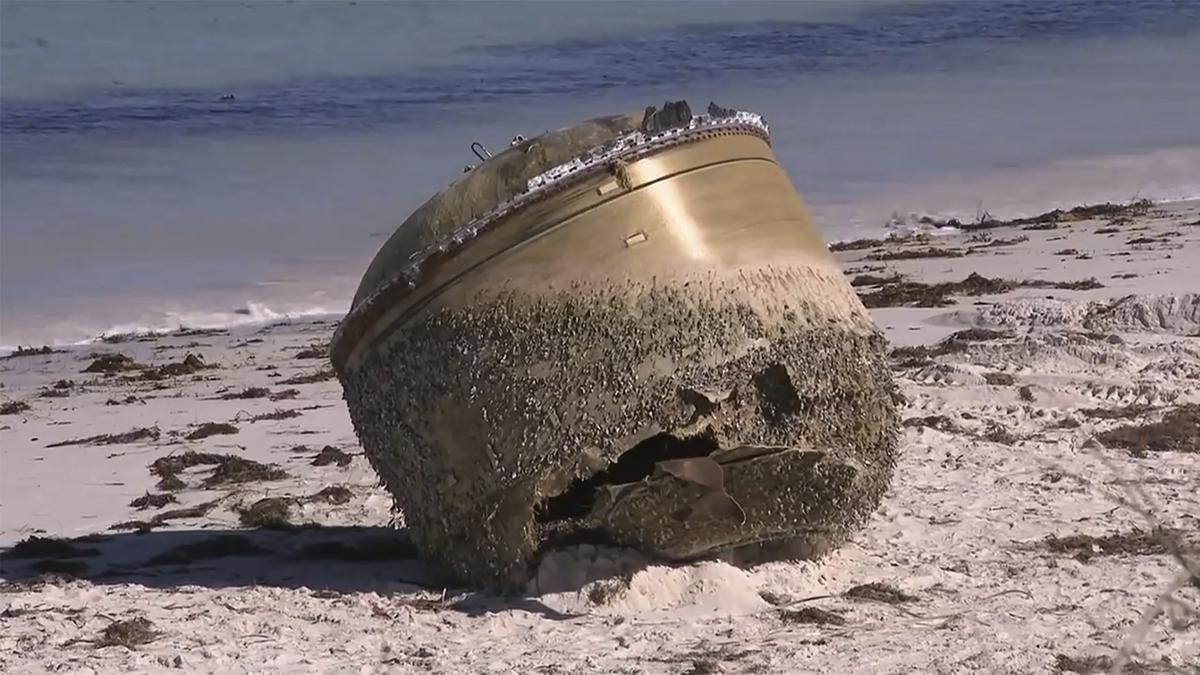- A big object discovered on the coasts of Western Australia a few weeks ago was determined to be the debris of an ISRO rocket used for the IRNSS constellation.
- Concerns have been raised concerning space debris and its potential impact on Earth and its inhabitants as a result of the catastrophe.

Frequency and Risks of Space Junk
- Common Occurrences: It is not commonplace for space debris to fall back to Earth. The majority of cases involve relatively small pieces that survive atmospheric friction and are usually unnoticed.
- However, there have been a few high-profile falls, including a 25-tonne Chinese rocket component that fell into the Indian Ocean in May 2021 and the disintegration of the Skylab space station in 1979, with some fragments landing in Western Australia.
How did the ISRO debris end up in Australia?
- Probable Re-entry and Ocean Drift: The debris most likely remained unburned while re-entering the atmosphere and finally fell into the ocean. Ocean currents could have brought it to Australia’s coasts.
- Move for disposal: The Australian Space Agency is collaborating with ISRO to decide the next steps, which will include taking into account commitments under United Nations space treaties.
Potential Hazards and their Impact on Life and Property:
- The danger posed by falling space trash to life and property cannot be overstated. Even objects that fall into oceans can endanger marine life and add to pollution.
- There have been no reported examples of falling space debris inflicting considerable damage on Earth. Debris falling over land has typically occurred in desolate places.
International Regulations and Liability
- Convention on International Liability for Damage Caused by Space Objects: International regulations, such as this Convention, govern issues related to space debris falling back to Earth.
- Absolute Liability: The launching country is “absolutely liable” to compensate for any damage caused by its space object on Earth or during an aviation flight.
- Compensation Provision: In the current instance, if the PSLV debris caused any harm in Australia, India might have been held accountable, regardless of whether it fell into the water first.
- Past Compensation: The Convention has only resulted in one payment of compensation, when Canada claimed damages from the Soviet Union in 1978 for a satellite containing a radioactive chemical that fell into its unoccupied northern territory. As reparation, the Soviet Union paid $3 million in Canadian currency.
Efforts of ISRO to Reduce Space Debris
- ISRO successfully completed a dedicated commercial mission, deploying seven Singaporean satellites into their designated orbits on board a PSLV rocket.
- Orbit-lowering ISRO conducted a one-of-a-kind experiment during this flight, lowering the fourth stage of the rocket into a 300 km high orbit after putting client satellites at an altitude of 536 km to reduce space debris concerns.
- Debris Removal Duration: The duration of the stage in space has been greatly decreased thanks to the orbit-lowering experiment to “two months.”
- Experiment Goals: The experiment intends to address space debris mitigation issues while also preserving desirable orbits for future satellite deployments.
Source: https://indianexpress.com/article/explained/explained-sci-tech/isro-rocket-debris-on-australian-shore-rules-governing-space-junk-8870243/
